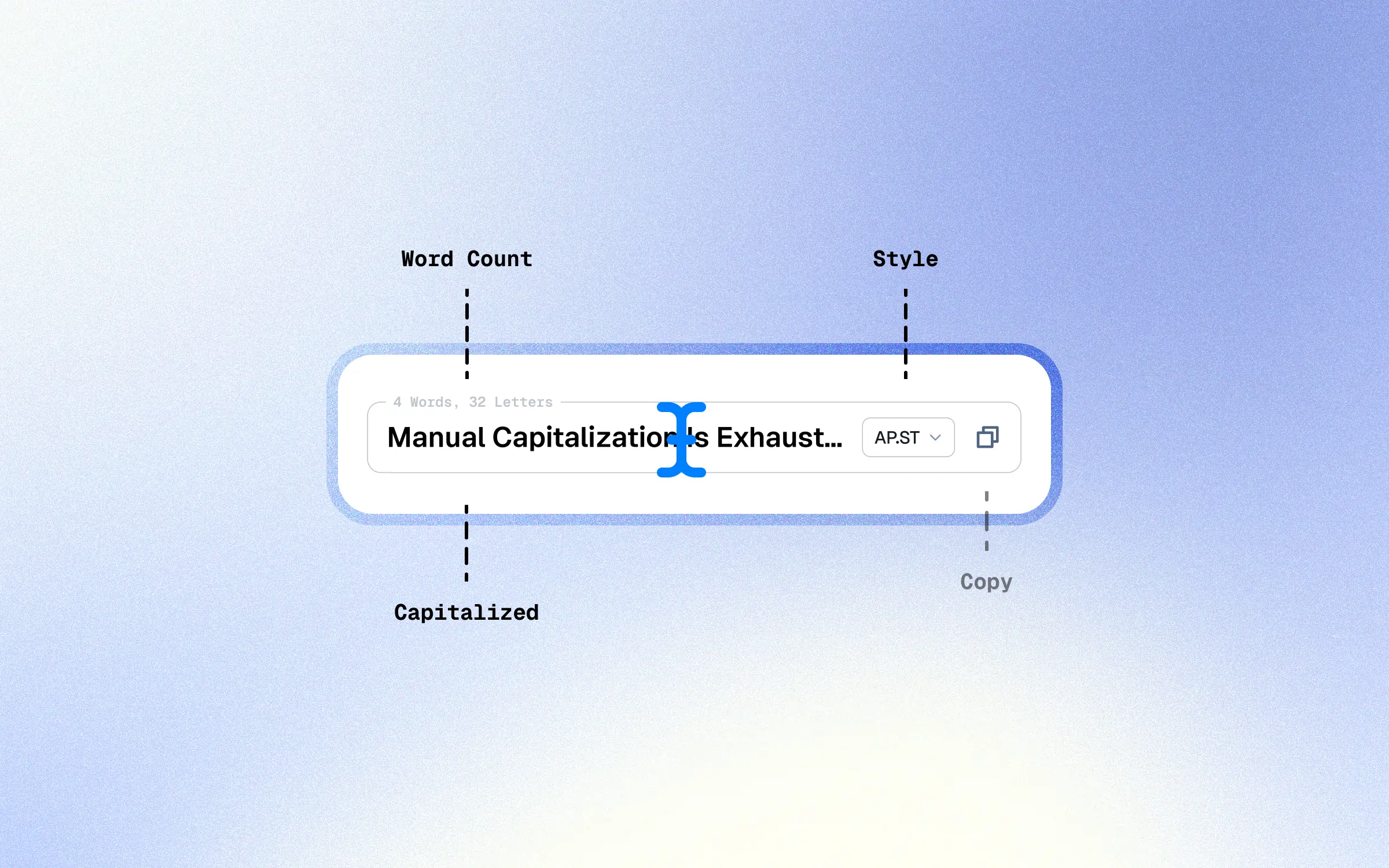THETOOLS
xrilion|2025
Styles
AP.ST
Upper
Lower
Title
CMO.S
AMA.S
NYT.S
MLA.S
WIKIS
SNTNC
ALT.S
ToGgL
Instant Title Capitalizer

I know some of these styles.
Some of them I don’t.
@Reader
Here are the Title Capitalization Rules.
AP Title Case
- Capitalize the first and last words.
- Capitalize principal words.
- Capitalize “to” in infinitives.
- Capitalize all words of four letters or more.Lowercase articles, conjunctions, and prepositions of three letters or fewer.
AMA Title Case
- Capitalize the first word of titles and subtitles.
- Capitalize major words.
- Lowercase coordinating conjunctions, articles, and prepositions of three or fewer letters.
- Do not capitalize “to” in infinitives.
- Capitalize both parts of hyphenated compounds.
- Capitalize the genus but not the species epithet.
APA Title Case
- Capitalize the first word of a title or subtitle.
- Capitalize the first word after a colon, em dash, or end punctuation.
- Capitalize nouns, verbs, adjectives, adverbs, and pronouns.
- Capitalize all words of four letters or more.Lowercase articles, conjunctions, and prepositions of three letters or fewer.
- Capitalize the second part of hyphenated major words.
- Lowercase the second part of a Latin species name.
CMoS Title Case
- Capitalize the first and last words of titles and subtitles.
- Capitalize nouns, pronouns, verbs, adjectives, adverbs, and some conjunctions.
- Capitalize prepositions with five or more letters.
- Lowercase articles and prepositions of four letters or fewer, except in Latin expressions.
- Do not capitalize “to” in infinitives or “as” in any grammatical function.
- Lowercase parts of proper names typically lower-cased in text.
- In hyphenated compounds, capitalize the first element and subsequent major words unless they are articles, prepositions, or conjunctions.
NYT Title Case
- Capitalize nouns, pronouns, and verbs.
- Capitalize all words of four or more letters.
- Capitalize no, nor, not, off, out, so, and up.
- Lowercase a, and, as, at, but, by, en, for, if, in, of, on, or, the, to, v., vs., and via, except when used as adverbs.
- Capitalize for if it replaces a verb meaning “support” or “advocate.”
- In hyphenated compounds, lowercase the second part if it follows a short prefix or doubles vowels; otherwise, capitalize it.
MLA Title Case
- Capitalize the first and last words of titles and subtitles.
- Capitalize nouns, pronouns, verbs, adjectives, adverbs, and subordinating conjunctions.
- Lowercase articles, prepositions, and coordinating conjunctions.
- Do not capitalize “to” in infinitives.
- Capitalize principal words following hyphens in compound terms.
- Lowercase the word after a hyphenated prefix if the unhyphenated form exists.